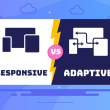Remarketing is a digital marketing strategy that targets users who have previously interacted with a brand. It serves ads to these users as they browse other websites or social media platforms. This approach helps remind potential customers about products or services they showed interest in, encouraging them to return and purchase.
Remarketing plays a crucial role in enhancing brand awareness and increasing conversion rates. By keeping the brand in front of potential customers, remarketing ads can effectively influence purchasing decisions. Understanding what remarketing is, how remarketing ads work, and the different types of remarketing campaigns can empower businesses to create more effective marketing strategies.
What is Remarketing?
Remarketing or retargeting is a type of advertising strategy that targets users who have visited a website or engaged with the brand at some point. Strategy lets businesses display ads to such users when surfing on other sites or social media. Remarketing keeps a brand at the top of mind and engages users to come back for their transactions. It encompasses a wide range of online activities, including search engine optimization (SEO), content marketing, social media marketing strategies, email marketing, pay-per-click marketing, and more.
Remarketing is often confused with retargeting. Though both will re-engage users, they are not the same thing. Remarketing is about showing ads to users who have interacted with a website or page through display advertising, most often. Retargeting, on the other hand, usually refers to targeted ads that follow along the lines of what the users have done online, based upon cookies.
How Remarketing Works
The core mechanics of remarketing center on the tracking of a user’s behavior on the internet. Whenever any user visits a site, a tiny piece of data called a cookie, is deposited in the user’s browser. This cookie enables the advertiser to identify the user when the person goes back to other websites. For this reason, businesses can display their ads to those people who have already shown interest in their products or services.
Tracking pixels also are critical when it comes to remarketing. A tracking pixel is a very small code placed on a website. It collects information concerning visitor behavior, such as the pages visited and time spent on them. Such information will enable businesses to reach the right audience with precision for their remarketing efforts. Customer insights and effective research on market trends through strategic marketing will be necessary to identify the target audience effectively.
Powerful Hosting for Social Network Growth!
For businesses looking to launch and scale their products successfully, UltaHost’s Social Network Hosting provides the reliable infrastructure needed to support high-traffic platforms, ensuring smooth performance and scalability for your social media or networking product launch.
Types of Remarketing
Remarketing has the following types:
Standard Remarketing
Standard remarketing targets ads to users who visit a website. Ads usually appear across other sites in the Google Display Network or like networks. For example, a user who browsed the online store for his favorite shoe would end up seeing the shoe-related ad on a news site. This happens because remarketing keeps the brand constant and pushes a user to come back.
Dynamic Remarketing
One might say that dynamic remarketing is a step ahead of standard remarketing, wherein it stretches to personalizing the advertisements. Generally, dynamic remarketing focuses on specific products the user has checked or even engaged with. For instance, the person checks a particular pair of shoes, and when the person visits other websites in the network, you might see an ad for the same particular pair of shoes and other complementary products. That’s where personalization plays a significant role in increasing engagements and conversion rates. Leveraging a solution like Cloudflare VPS server helps ensure your product’s online presence optimizes for speed and security.
Remarketing Lists for Search Ads (RLSA)
Remarketing Lists for Search Ads enables search campaign advertisers to prepare search ads for people who have already visited a website. So, while people come to search on specific keywords, it enables advertisers to optimize the ads to nudge them into coming back. Therefore, an example would be that you had visited a travel website beforehand; next time, while searching for travel-related terms, you will see some targeted ads for vacation packages. RLSA enhances search campaigns by focusing on a more relevant audience.
Importance of Remarketing in Digital Marketing
Businesses need to incorporate remarketing because it re-engages potential customers who may not have converted due to one or more reasons. It hence raises the brand visibility and keeps the brand fresh in the minds of the users. This could be the real key to a jump in conversion rates since it encourages users to return to the website.
Remarketing also plays an important part in the customer journey. It acknowledges that a user does not necessarily convert on his or her first visit. Continual engagement of these users in remarketing ads might lead them through the entire decision cycle. It brings more sales and allows more long-term customer relationships to be created.
- Enhanced Brand Awareness: Remarketing keeps your brand visible to users who have previously shown interest. Consistent exposure through remarketing ads reinforces brand recognition and recall.
- Higher Conversion Rates: Targeting users familiar with your brand leads to higher conversion rates. These users are more likely to return and complete their purchases, boosting overall sales.
- Cost-Effectiveness: Remarketing can be more cost-effective than traditional advertising methods. By focusing on warm leads, you optimize ad spending and achieve a better return on investment (ROI).
- Segmentation and Personalization: Remarketing allows businesses to segment audiences based on their behavior. Tailoring ads to specific groups enhances relevance and engagement, leading to improved performance.
- Guiding the Customer Journey: Remarketing is essential for guiding users through the customer journey. By providing targeted reminders and offers, you encourage users to revisit and complete their purchases, fostering loyalty.
Benefits of Remarketing
Remarketing has the following benefits:
Improved Brand Memorability
Since ads are targeted to users who have already visited the website, it is re-exposed to a person who has already visited the website. Hence, there would be a higher chance of the users remembering the brand when they are ready to purchase.
Higher Conversion Rates
Remarketing is known to achieve higher sales and conversion as it reaches users who are already interested but abandon the sale without making the purchase. These users are already oriented about the brand, so relevant ads can simply urge them to return and seal their deals. The internet breaks down geographical barriers, allowing businesses with scalable hosting from Ultahost to reach a global audience and expand their market presence beyond local boundaries.
Cost-Effectiveness
Remarketing is also often less expensive than traditional advertising methods. Traditional advertising throws a wide net, whereas remarketing drags it in by concentrating it on interested users who have engaged with the brand in some way, thereby putting the advertising budget to better use and generating a larger return on investment.
Targeting Inactive Visitors
Therefore, remarketing has an advantage in targeting users who are already familiar with the brand. Such users are highly likely to interact with adverts and buy as they have already demonstrated interest in the products or services offered.
Customer Relationships
Remarketing is crucial in creating continued engagement since it maintains the interest of potential customers long after they have first visited. Businesses therefore keep the conversation going in their pursuit of helping clients through serving relevant ads and personalized content. This step can help the businesses have a better relationship thus improving loyalty and repeat business.
Remarketing Campaign
Setting up a remarketing campaign involves strategic planning and execution to effectively re-engage users who have interacted with your brand.
Choosing the Right Platform
The most important point in setting up a remarketing campaign is choosing the right platform. Google Ads can be used to show ads on the Google Display Network, while Facebook marketing lets users target Facebook and Instagram. Each of them possesses unique features and should be chosen according to one’s target audience and marketing goals.
Creating Remarketing Lists
Segmentation based on behavior is the best way to do remarketing. You could make your remarketing lists by tracking actions on your website. Such as which pages users visited or products they viewed. When you’ve identified a specific portion of an audience, like cart abandoners or even prior buyers, you’ll be able to tailor your ads and your messaging in a way that may generate more conversions.
Designing Effective Remarketing Ads

Crafting Convincing Ad Copy
Attract users with compelling ad text. Use clear and concise language, enhance unique selling points, and create the need for action. One can use phrases like “limited-time offer” or “exclusive deal,” which can encourage users to act.
Importance of Visuals
In remarketing ads, imagery and branding play a significant role. Employ rich media images that appeal to your target audience, and will harmonize with the brand identity you portray. Consistent visuals help to drive the rebranding recognition of your name and allow your advertising to linger in the minds of your consumers better.
CTA Strategies
A clear call to action (CTA) is important in remarketing ads. Let users know what you want them to do: “Shop Now,” “Learn More,” or “Get 20% Off.” A good CTA leads to high click-through rates and conversions.
Campaign goals
Campaign success definition and measurement Defining campaigns and measuring their success is one of the pillars of effective remarketing. Define goals, such as increasing website traffic or boosting sales. Regularly monitor performance metrics to see whether your ads are working and make adjustments when necessary.
SMART Goals
Use the SMART criteria to set objectives for the campaign. SMART is an acronym created to stand for Specific, Measurable, Achievable, Relevant, and Time-bound. It is by following these that focus can be given to the formation of goals that guide remarketing work so that improved results are maintained.
Budgeting for Remarketing Campaigns
Budgeting in remarketing is important. Consider the audience size, ad frequency, and platform costs while establishing a budget, and further, analyze potential ROI for remarketing efforts to know the ideal allocation of resources. Frequent review and budget adjustments based on the performance of each remarketing campaign can greatly enhance the output.
Best Practices in Remarketing Campaigns
Frequency Capping
Frequency capping refers to limiting the number of impressions that the same user gets from the same advert over a certain period. This is important because advertisement fatigue may provoke annoyance or negative perceptions toward the brand. Repeated exposure to the same advertisement is irritating for users, resulting in degrading engagement as well as likely ignoring future ads. Frequency caps ensure that businesses maintain their brand appearance without overexposing users to themselves. The sensitivity with which the frequency is applied helps in the improvement of a user experience and boosts remarketing efforts.
Elevate Your Customer Relationship Management Now!
Ready to streamline your customer relationship management? Integrating the best CRM hosting from UItaHost with your digital marketing enhances your business efficiency and customer interactions. Boost your productivity and improve customer satisfaction!
A/B Testing
A/B testing, or split testing, involves creating two or more variants of an advertisement to determine which performs better. It is an extremely useful exercise in remarketing campaign optimization because, through A/B testing, a marketer can experiment with various elements, including ad copy, visuals, and calls to action, and determine the best way to deliver them to audiences based on what’s resonating most with his target population. For instance, two variations of the same advertisement headline might be tested to determine which one results in a higher CTR. Ongoing A/B testing will enable marketers to continually optimize their campaigns over time, thereby increasing return on investment and overall effectiveness.
Timing and Duration
Effective remarketing periods are necessary for maximizing campaign effectiveness. The timing and duration of remarketing ads can make a tremendous difference regarding user engagement and conversion rate. As an example, for flash sales or special promotions, periods are shorter. If a consideration is higher, say traveling package or high-end products, the periods may be longer as you might require additional time for a user to decide upon a purchase. Lastly, think about the purchase cycles of your potential target market. Timing and duration will need to be optimized based on user behavior patterns for more efficient remarketing approaches.
Measuring Performance Metrics
The effectiveness of remarketing campaigns must be determined using key performance metrics. Such important metrics include click-through rates (CTR), conversion rate, and return on investment (ROI). CTR indicates how well the ads are being responded to, while conversion rates help measure how good the campaign is at driving executions such as purchases or sign-ups. ROI provides insight into the profitability of a campaign on the whole. Regular monitoring of these helps marketers identify trends, know what works, and thus data-driven decision-making for further campaigns.
Google Analytics for Remarketing
Its powerful analysis tool with Google Analytics, allows setting up specific goals from the inside to track how users interact and behave after clicking on remarketing ads and should be monitored for conversions, bounce rates, average session durations, and so forth. Furthermore, it also lets marketers differentiate between audience segments based on their behavior, which is handy in knowing which audience segments respond the best to remarketing efforts. It will enable better refinements of strategies as well as the maximum results of a remarketing campaign by making proper use of Google Analytics.
Personalization Tactics
Personalized ads help in engaging different groups of audiences strongly. Personalization is all about presenting the ad according to the behavior, interests, and demographics of the users. For example, if someone has shown interest in some specific products before leaving the website, ads showcasing those selected products, along with some other products that can complement them, increase the impression and interest. Dynamic remarking leverages the ability to provide automated personalized ads based on user engagement. The personalization beyond making the ad more interesting triggers a feeling of being associated with the brand, thereby increasing the conversion chance.
Behavior-Based Retargeting
User behavior-based ad tailoring is key for best performance in remarketing. By seeing how users are interacting with your website—pages visited, time spent on pages, actions taken—marketers can deliver ads that match a user’s specific interest. Take a user who spent hours on a product page, and still exited without buying. A remarketing ad on the product, or offering them a discount, might bring them back to the site. Such an approach not only improves relevance but also increases the conversion of interested users to paying customers. A remarketing approach based on user behavior can increase the personalization and interaction of a remarketing experience for businesses.
Common Mistakes to Avoid

Targeting Too Broadly
How many nightmare remarketing campaigns started with the targeting strategy of targeting everyone? The largest risk of remarketing is over-targeting. Anything too broadcasts a huge net that may catch users with no interest in the products or services that the business wants to offer. This happens with wasted ad spend and low conversion rates. Nonspecific targeting dilutes the strength of campaigns because the advertisement might reach users who have a smaller chance of engagement. To deliver better performance, it is highly crucial to target people based on specific behavioral and attribute conditions that ensure the relevance of targeted ads for them.
Ignoring Mobile Users
In the present era of digital marketing, mobile users ignore what will turn out to be an expensive error. Since mobile traffic comes as the majority of all web traffic, the remarketing ad should be optimized properly for mobile. This means the ads have to be attractive, and engaging on small screens. Otherwise, users may not find it easy to interact with nonmobile-friendly ads. Low click-through rates and conversions will depict what could happen in this case. By focusing on mobile optimization, businesses would be able to capture the attention of on-the-go users and elevate the overall performance of their remarketing efforts.
Neglecting Ad Refresh
Failure to update content in ads regularly may result in dilapidation, and users may even develop a deadening effect on ads that they see very frequently. Thus, this may cause ad fatigue. Therefore, results include click-through rates and bounce rates. Updated ad content keeps the campaign fresh and relevant. This may rekindle interest among the target customers once again. New offers, visuals, and calls to action can work well in keeping the engagement level high and the overall result of remarketing campaigns improved as well.
Overreliance on Remarketing
Overremarketing can adversely affect user perception and engagement. Too much frequency of repetition of the same advertisement may be annoying and even provoke brand aversion. Usually, it is called “banner blindness” or people get accustomed not to noticing any ads at all. To avoid that, balancing both the frequency and duration of advertisement exposure is necessary. The capping rate and ad content can differ in order to sustain a good user experience without compromising on marketing goals.
Failing to Track Performance
The greatest mistake might be the failure to measure performance, which will only keep remarketing campaigns from success. One may not see any key metrics unless measured; hence, there will be no idea about what works and what does not work out. The regular analysis of performance data—click-through rates, conversion rates, and ROI—will arm marketers with insights that drive better decision-making and correct changes in campaigns. In using data, firms or businesses can determine trends and optimize their strategies, thus ensuring maximum effectiveness for their remarketing efforts. Regular monitoring further allows campaigns to stay strictly in tune with business goals and user behavior.
Advanced Remarketing Techniques
Cross-Device Remarketing
Cross-device remarketing allows targeting of users across multiple devices for an integrated experience. At various stages of the path to conversion, most users flip between various devices like smartphones, tablets, and desktops. Cross-device tracking helps in recognizing users on different devices and then serving relevant ads to them. The result is that chances for re-engagement increase due to the probability of viewing the same or similar ad on different devices, thereby reinforcing brand recall, which eventually leads to a conversion.
Facebook and Instagram are very great at remarketing. There is a one-time information collection or retargeting pixel, or else integrating the CRM systems to get audiences. Using that pixel or integration, companies can display targeted ads for those users. Social media remarketing also enables nice visual storytelling and interactive formats and, therefore, is an effective way to capture the attention of users who have previously demonstrated interest and drive conversions.
Video Ads Use in Remarketing
These are a very powerful remarketing medium because messages can now be easily communicated in a much more engaging and memorable way than print and audio media. Video remarketing might target users after they have visited a website or engaged with particular content. They can be placed on YouTube and social media, which will help show your products, great testimonials, or amazing stories about the brands. Using video in remarketing would help engage more, with better retention rates, and higher conversion rates.
Email List Retargeting
The best possible usage of the customers is that businesses have already been able to create remarketing campaigns using email data. The marketer can reach out to the users who have previously engaged with the brand but didn’t make a purchase by building a custom audience list from an email list and sending targeted ads through social media or the display network to encourage them to come back to the website. The introduction of personal messaging based on the preferences of users as well as previous interactions will further raise relevance. This capacity also increases the conversion chances. Using data from emails for remarketing reduces the complexity of maintaining customer relationships and enhances campaign performance.
Integration of Remarketing with Marketing
Adding remarketing to other channels like SEO, content marketing, or email marketing makes for a strategic approach. For instance, on any website, SEO might bring users to the website. However, remarketing can greatly increase the chances of re-engaging those visitors with targeted ads after they leave the website. Content marketing can then take the lead further by converting them into a customer and remarketing can remind the user about the same content through targeted ads, which thereby improves the overall customer journey and conversion rate.
Use of Customer Opinion for Re-marketing
Incorporation of customer opinion in re-marketing enhances ad relevance and effectiveness. Any critique of the feedback educates a business about customer preference and pain areas so that it can modify the targeting accordingly and personalize the ad content. For example, if a customer prefers a specific feature, the remarketing advertisement can highlight that feature. A response to opinion implies creating a real connection thereby increasing chances for conversion.
Cross-Promotion Strategy
Cross-promotion through remarketing means the promotion of related products to interested users. For example, if a customer views one camera model, remarketing could promote related accessories such as lenses or tripods. It is important in increasing average order value and inducing repeat purchasing. Cross-promotion from other brands can extend reach and exploit opportunities with remarketing campaigns.
Future Trends in Remarketing
AI and Machine Learning in Remarketing
- Hyper-Segmentation: AI algorithms can look through huge volumes of data on the patterns of user behaviors so as to understand them better.
- Personalization: Machine learning facilitates optimizing ad content on individual user preferences making remarketing ads relevant and engaging.
- Predictive Analytics: AI-based tools will be able to predict how users might behave, allowing companies to better predict needs and align their remarketing strategies accordingly.
Privacy Regulations and Their Implications
- Increased Compliance Burden: Evolving privacy laws in the names of GDPR and CCPA demand that companies be more transparent with manipulation of user data.
- Impact On Data Collection: Tighter regulations can affect the use of cookies and online tracking technologies, which would undermine how remarketing campaigns are operated.
- Focus on first-party data: Businesses could be forced to focus on first-party data collection and usage for effective targeting as well as to comply with regulations.
Emerging Platforms for Remarketing
- New Social Media Networks: Channels such as TikTok and newer applications facilitate the ability to converse with new, younger markets through remarketing. –
- Integrations within shopping platforms: As e-commerce grows and grows, it will provide more remarketing opportunities directly within the buying process.
- Innovative Advertising Networks: Newer networks and platforms are being rolled out and offer varying opportunities in which businesses may appeal to their target market.
Conclusion
Remarketing plays a crucial role in digital marketing by helping businesses reconnect with potential customers who have shown interest in their products or services. By keeping your brand in front of these users, remarketing enhances brand awareness, boosts conversion rates, and fosters ongoing customer relationships. As you develop your marketing strategies, consider incorporating remarketing to leverage its powerful benefits.
To support your outbound marketing efforts, ensure your communications are reliable and cost-effective with UltaHost’s email hosting server. Experience top-quality service and seamless email management without breaking the bank.
FAQ
What is remarketing?
Remarketing is a strategy that targets users who have previously visited your website with tailored ads to re-engage them.
How does a remarketing ad work?
A remarketing ad shows relevant ads to users based on their past interactions, using cookies or tracking pixels.
What are the benefits of remarketing campaigns?
Remarketing campaigns increase brand awareness, improve conversion rates, and offer cost-effective ways to target interested users.
Is remarketing the same as retargeting?
Remarketing typically refers to email-based campaigns, while retargeting focuses on ads displayed to website visitors.
How can I set up a remarketing campaign?
Choose a platform like Google Ads, create remarketing lists, design targeted ads, and set measurable campaign goals.
What are the types of remarketing?
Types include standard remarketing, dynamic remarketing, and remarketing lists for search ads (RLSA).
How can remarketing improve conversion rates?
By targeting users already familiar with your brand, remarketing encourages them to return and complete their purchase.














